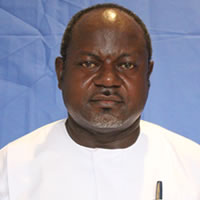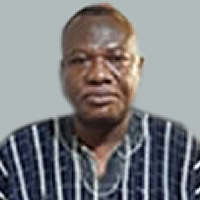Increasing access to potable water and sanitation is key to achieving health outcomes and sustained poverty reduction. This section looks at water and sanitation with regard to water sources, and means for the disposal of waste and other variables under water and sanitation. Water is very important in our daily activities. It is therefore necessary to consider it when dealing with social characteristics of man.
Sources of Water
The sources of water patronized include pipe borne, borehole and well (major sources), River/Dam and Rain (complimentary sources). The major source of water in the districts are the borehole and pipe borne water which constitutes 59.5%, 32.7%, and 7.8% respectively, every household uses Rain, River or Dam water as complimentary source. Since majority of the people patronizes good drinking water, cases of water borne diseases will be minimal and people will have good health to contribute to development.
The distribution of safe water is evenly distributed in the district. There are 180 boreholes scattered in 68 communities. And also there are 95 standpipes distributed as follows;
Ejura-54 standpipes
Sekyedumase-17 standpipes
Nkwanta-8 standpipes
Hiawoanwu-8 standpipes
Kasei-8 standpipes
Because of increased access to safe water, incidence of water borne disease like guinea worm infestation is not common in the district. Currently, drilling is in progress for the construction of 48 boreholes in 40 communities under the Rural Water Supply Project IV (RWSP IV) being funded by KfW. An additional 40 boreholes are planned to be constructed under the Millennium Challenge Account Project. The pipe system at Ejura will also be expanded to cover areas like Sabonline, PWD, Badukrom, Barrier-Police Station and Nkoranza Road-Executive Guest House area, under the same project.
Treatment of Rain and River/Dam Water before Use
Within the District about 91.4% of households do not treat their water (rain and river) before using while 8.6% of them do treat before usage. This could probably be attributed to the fact that it is not consumed but used for laundry and other household purposes. For those who do not treat about 65% of them believe it is not necessary to treat their Rain and River water before usage, whilst 22% of them do not treat their water due to religious belief.
Sanitation
Even though sanitation is important variable to the health of people, the general sanitation practices leave much to be desired. In terms of liquid waste disposal, 76.9.0% of the people freely disposes off their liquid waste openly. Again 11.2% dispose through disorganized drains and 11.9% dispose waste through organized drains. This implies that disposing liquid waste freely and through disorganized drains would lead to erosion and which makes the environment very untidy and unhealthy to live in. It would cause the breeding of mosquitoes leading prevalence of certain diseases such as malaria.
Toilet Facilities and Their Conditions
The District has a total of 197 public toilets and 515 household toilets. With 31.9% of the population patronizing the pit latrine and few percentage of 2.8 patronize the free-range system implies that the District has a long way to go as far as sanitation is concerned. Also most (60.6%) of the people patronize their toilet facility outside their homes and 39.4% patronize toilet facility within their houses. Out of those who use toilets outside their houses, about 82.6% of them cover a distance less than 1km to use a toilet facility.
Systems of Refuse Disposal
The system of refuse disposal include, surface dumping (public open space), burning and house to house collection burying and other methods. Majority of the people (90.1%) dispose of their solid waste by public open space, followed by 5.3% who use the house to house collection system. This implies that Environmental hazards will increase as people continue to dispose of refuse openly. Also flies from the refuse dump would lead to the spread of diseases. The average distance to a refuse disposal site is 1.3km.
Date Created : 11/24/2017 4:23:11 AM





